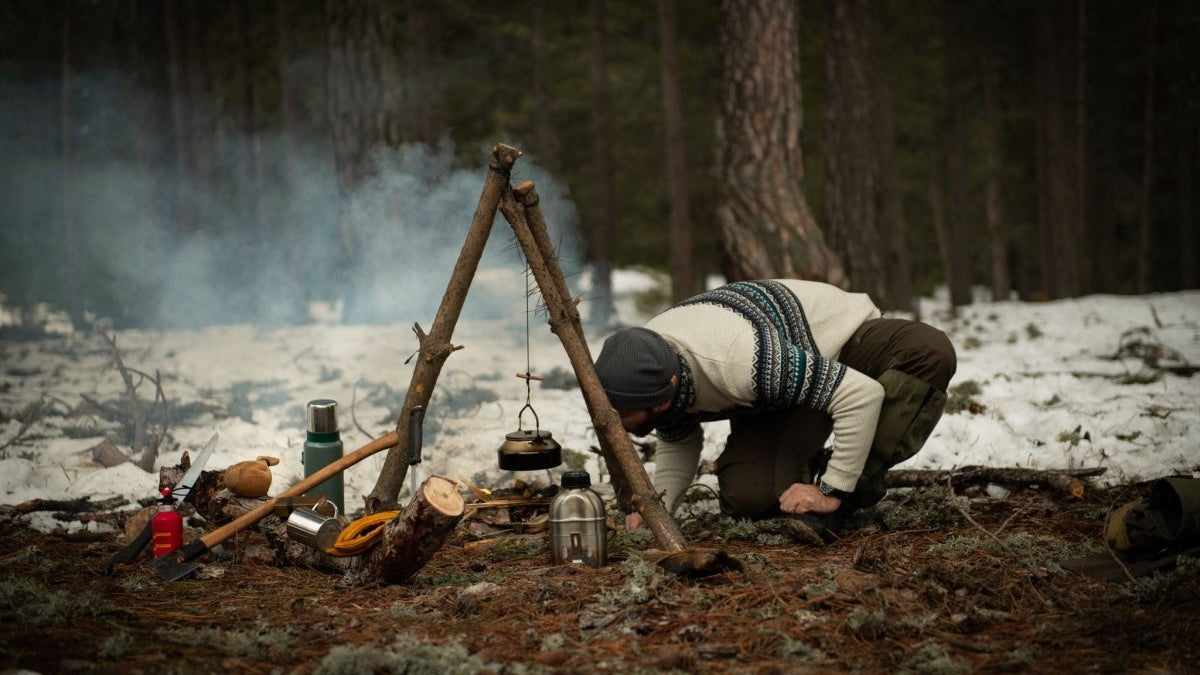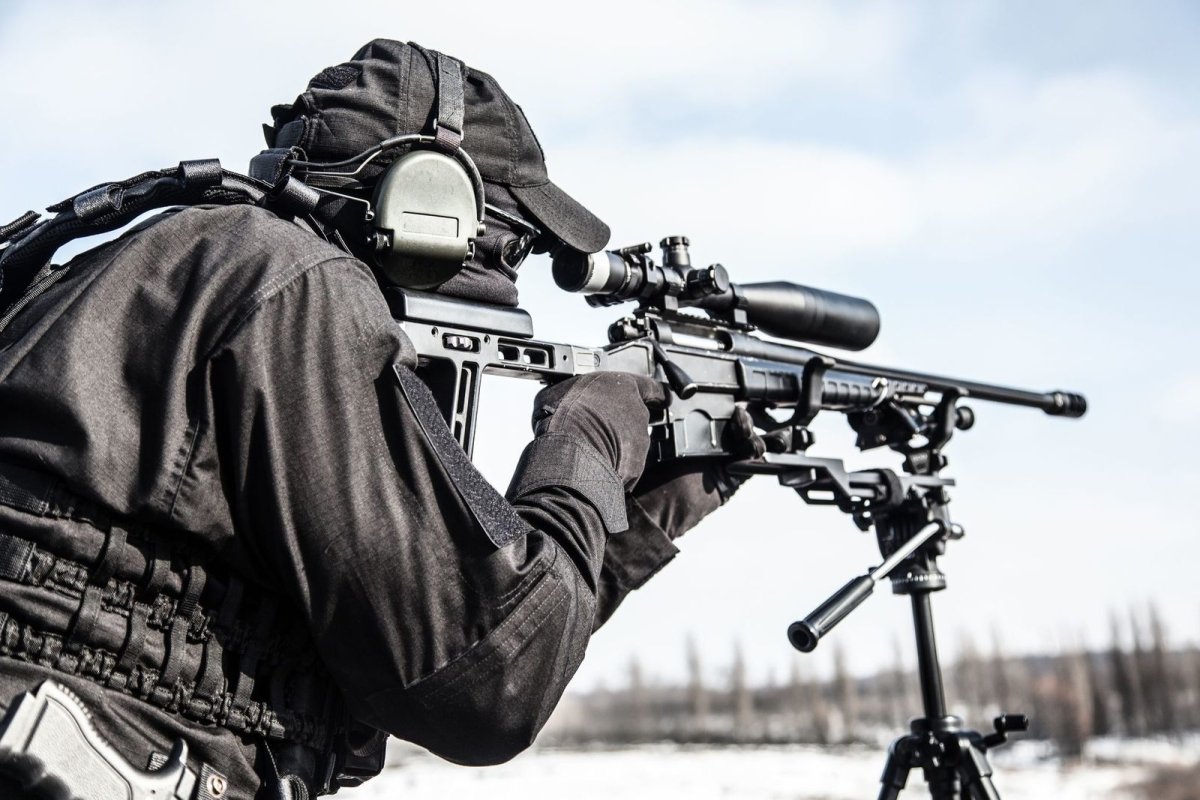Have you ever thought about what you would do if you were stranded in the woods? Would you have the knowledge, tools, supplies, and instincts to survive? If you end up alone or injured on a big game hunt in someplace, like Alaska or other remote location, you need to know how to survive until help arrives.
The three most basic needs for surviving in the woods are water, shelter, and food. You also need key supplies if you find yourself alone in the woods. For discussion purposes, let’s call the basic needs “essentials” and the means to provide for these basic needs “supplies.”
The best way to stay safe is to have a plan. Before you go anywhere in a remote area, tell someone where you are going and how long you will be gone. If you become lost, you want to make sure that someone will be looking for you as soon as possible. The only way to do that is to have a plan. Always take your cell phone and, if possible, carry a satellite phone so that you are never out of touch.
Read on for more wilderness survival tips.
Essentials
So, you find yourself lost in the woods you have to provide for your basic needs until help arrives. There are four basic essentials you need to survive in the woods alone: water, shelter, food, and fire.
Water
Water is essential for survival, but it is impossible to say with confidence how long the average person can survive without it. It’s safe to say you can definitely survive longer without food than you can without water.
Many factors influence how much water someone needs and how long they can survive without it. The best way to understand how much water you need in a particular situation is to understand that you must maintain water balance in your body. Water loss must be replaced by water intake.
Most water loss is easily seen through sweat and urine, but another major way water is lost from the body is through respiration (breathing). Every time you breathe, you lose water. On a cold day, you can see the water lost in your breath through condensation.
It is safe to say that you can only survive a few days without water, with the general rule being three days. That’s what makes water so critical if you have to survive in the woods alone.
There are ways to find water if you find yourself alone in the woods without water or with limited water. Streams and creeks are the most obvious choice because they are least likely to be contaminated, but what if there are no running water sources near you?
Other Water Sources
- Lakes. Lakes are another obvious source but should only be used if you cannot find running water.
- Follow Mountain Valleys. Mountain valleys often lead to creeks and streams.
- Dig for water. Find a damp area with lots of ferns or lush foliage and dig a hole. Leave the hole open and wait for the water in the soil to fill the hole.
- Collect dew or rainwater. Use your rain jacket or shelter cover to collect dew.
If possible, sanitize your water before drinking. If you don’t have water purification tablets, the best way to sanitize water is to boil it over a fire for five minutes. If you cannot make a fire, filter the water through cloth like your shirt to remove particulate matter.
Shelter
The second essential element to surviving in the woods is shelter. The most common cause of death in the woods is hypothermia, so you need protection to keep warm and protect yourself from rain. Even in warmer months, you need shelter to protect you from the elements.
If you have a tent or tarp, building your shelter will be much easier. Simply erect the tent, or hang your tarp between two trees. You can also shelter in a cave or overhang if one is available.
If you don’t have a tent or tarp and there are no caves or overhangs, you will need to build a shelter. Choose a flat spot away from rivers or streams. A downed tree that is dry underneath is an excellent option if you find one.
You can also brace a branch between two trees and then lean sticks against the horizontal branch to form a lean-to. When your shelter is finished, make a bed of leaves, pine branches, or other material to keep you off the ground. This is important to keep you warm.
Food
If you are stranded alone in the woods without food, you have some options. You need energy to survive and help keep your body warm. Getting to know the area before you go is a good way to know ahead of time what plants are edible.
It is essential that you only eat foods that you are sure are not poisonous. You have enough problems if you are trying to survive in the woods. Eating poisonous things you think are food will only compound the problem.
Non-Poisonous Foods
Stick to common food items that you know are not poisonous:
- Nuts and berries, as long as they are not a toxic variety.
- Plants like dandelions and clover.
- Bugs like crickets and larvae.
- Fish and small animals you can catch.
- Trees with edible inner bark. Berries and nuts are season-specific so aren’t always available. Doing a bit of research on edible bark could make a huge difference if you are faced with surviving alone in the woods.
Poisonous Foods
How do you tell if something is poisonous?
Avoid all mushrooms unless you are an expert since so many mushrooms are poisonous. Avoid white and yellow berries, shiny leaves, thorny plants, and umbrella-shaped flowers. Brightly colored bugs are often poisonous and avoid all caterpillars.
If animals or birds are eating a plant, it is probably safe. You can also use the Universal Edibility Test to determine if a plant is poisonous.
To use the Universal Edibility Test, separate a plant by all its parts (leaves, stem, buds, roots) and test them separately by placing the plant pieces on the inside of your elbow for 15 minutes. If there is no reaction, the plant is probably safe.
Eat a small portion of the plant part you already tested and wait at least eight hours to see if you have a reaction. If you have no reaction, the plant is probably safe.
Fire
Fire is important for staying warm, boiling water, and signaling for help. First, make a fire pit with rocks to prevent the fire from spreading and getting out of control. Layer the bottom of the fire pit with materials that burn easily, like dried grass, wood shavings, or paper.
Layer on small sticks in the form of a teepee or criss-cross shape. Light it with matches or lighter and add larger wood as the fire catches.
Don’t have matches or a lighter? Use flint and steel, focus a beam of sunlight through a lens like eyeglasses or binocular lense. Old fashioned boy scout friction is the most difficult way to start a fire. Using this method, you must roll a long thin stick against a board until it glows red and an ember forms.
When you have an ember, drop it in a pile of dried grass and blow it until the flame catches. Add larger and larger sticks until the fire is established.
To make a signal fire, you will want to create thick black smoke by layering live vegetation on top of the fire. Three fires laid out in a triangle shape is an international distress signal. You can also create three large piles of rocks or branches in a triangle shape to signal for help.
Supplies
When you think about the basic needs for surviving in the woods, you also need to take some necessary supplies to better provide for those basic needs. Supplies you should always have with you if there is even a remote chance you could get stranded in the woods are:
- Cell phone and satellite phone
- Water bottle/Water purification tablets
- Food
- Tent or shelter cover
- Cold weather gear, like good boots
- Waterproof matches and lighter, flint/striker, tinder materials like dryer lint
- Knife
- Gun
- Whistle
Into the Woods and Back Again
GunSkins has you covered with the basics to survive in the woods. Before you go on any trip into the wilderness or a situation where you may get lost in the woods, make sure you pack the necessary supplies to survive until help arrives.
Knowing how to find water, build a shelter, search for and find food, and start a fire will allow you to survive until help arrives. Don’t forget to tell someone where you are going and how long you will be gone.
Sources:
How long can you live without water? Facts and effects | Medical News Today








